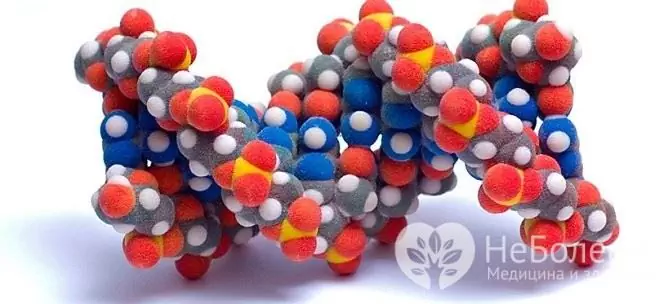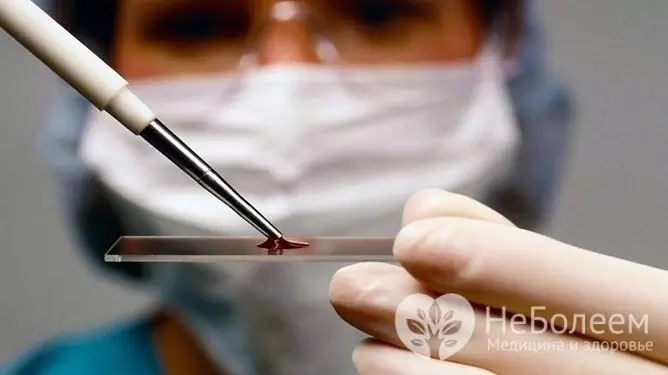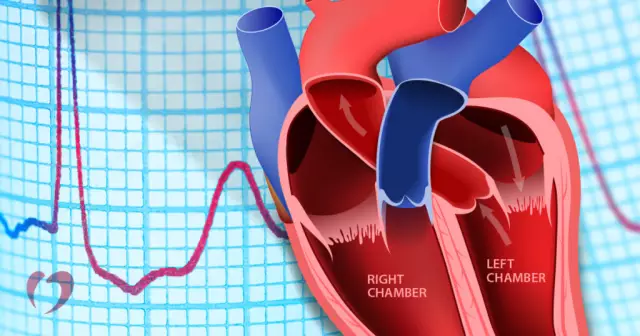- Author Rachel Wainwright [email protected].
- Public 2023-12-15 07:39.
- Last modified 2025-11-02 20:14.
Hypoproteinemia
The content of the article:
- Causes
- Forms
- Signs
- Features of the course in pregnant women
- Diagnostics
- Treatment
- Prevention
Hypoproteinemia - a decrease in the amount of total protein (protein) in the blood serum.
Whey proteins form the bulk of nonvolatile substances in blood plasma; their concentration ranges from 60 to 80 g / l, which is approximately 4% (according to other sources - 7%) of the total mass of proteins in the human body. In total, about 100 different proteins have been isolated, the main of which are fibrinogen, albumin, and 4 globulin fractions (α1, α2, β, and γ). The most widely represented in the total mass of proteins is albumin (about 45 g / l), which is responsible for maintaining the colloid-osmotic (or oncotic) blood plasma pressure. It is the decrease in the concentration of albumin that leads to the development of hypoproteinemia to a greater extent.

Hypoproteinemia is characterized by a decrease in serum protein (protein)
The constancy of colloidal pressure contributes to the maintenance of the circulating blood volume at the proper level. Since the concentration of proteins in blood plasma is much higher than in interstitial fluid, they, being colloids, bind and retain water, preventing it from leaving the systemic circulation.
In the case of the development of dysproteinemia - a quantitative and qualitative shift in the protein composition of blood plasma (an increase, decrease in the concentration of protein or a change in the ratio of its types, fractions) - the constancy of the internal environment of the body is disturbed, which entails many negative consequences.
Causes
A decrease in the concentration of total protein in blood plasma can be observed in the following physiological and pathological conditions and diseases:
- prematurity (hypoalbuminemia in this case is due to the functional immaturity of liver cells, leading to their insufficient protein synthesizing activity);
- starvation, malnutrition, lack of essential amino acids in the diet (insufficient intake of protein from the outside);
- violation of protein absorption due to gastrointestinal diseases;
- mutation of a gene that controls protein synthesis by hepatocytes;
- congenital diseases, manifested by impaired digestion and absorption of protein;
- increased protein secretion by the epithelium of the renal tubules (for example, with Fanconi syndrome);
- severe hypovitaminosis;
- diseases that provoke accelerated breakdown of proteins (hyperthyroidism, acute infectious processes, Itsenko-Cushing's disease).
In addition to the listed conditions and diseases, hypoproteinemia can result from accelerated protein breakdown in such cases:
- acute massive bleeding, chronic blood loss;
- extensive wound surface;
- common acute inflammatory skin diseases (for example, generalized eczema);
- burns with damage to a large area of the skin surface (plasmorrhea);
- dyspeptic disorders;
- stagnation in the circles of blood circulation, accompanied by the formation of edema;
- severe injuries;
- acute infectious diseases;
- malignant neoplasms;
- hypoxia.
Forms
Depending on the underlying cause, hypoproteinemia is:
- primary (it develops independently, in the absence of an underlying disease, it can be hereditary);
- secondary (acquired);
- physiological;
- pathological.
By origin:
- true, or absolute (protein synthesis decreases);
- false, or relative (due to thickening of the blood, hyperosmolar dehydration).
Signs
The main symptom of hypoproteinemia is edema, which can be localized or widespread. In severe cases, extravasation (non-inflammatory fluid effusion) is noted in the abdominal or pleural cavities, less often in the pericardial cavity, which is accompanied by characteristic symptoms.
Edema is more often localized on the face (in the periorbital region), in the lower leg, ankle joints and feet, on the hands.

Edema is the main symptom of hyponatremia
Features of the course in pregnant women
Hypoproteinemia that develops during pregnancy may be one of the signs of late toxicosis (gestosis). Gestosis is a serious condition that increases the risk of perinatal mortality by about 5 times compared with the average sample of healthy pregnant women.
Diagnostics
The main diagnostic criterion for hypoproteinemia is a decrease in the concentration of protein in the blood plasma to a level of less than 60 g / l, which is determined in the course of a laboratory blood test.

Hyponatremia is diagnosed when plasma protein levels are less than 60 g / L
Treatment
Since in the overwhelming majority of cases, a decrease in the amount of protein in the blood is a symptom of the underlying pathological condition, treatment is aimed at eliminating the underlying disease:
- diet correction;
- nephroprotectors (for kidney pathology);
- hepatoprotectors (for liver diseases);
- correction of water-salt balance (in acute infectious processes accompanied by massive loss of fluid);
- infusion therapy (with massive blood and plasma loss);
- correction of hormone levels (in diseases of the thyroid and parathyroid glands);
- pro- and prebiotic agents (for bowel diseases);
- vitamin therapy; etc.
Prevention
In order to prevent the development of hypoproteinemia, it is necessary:
- timely treatment of diseases that contribute to its development;
- formation of an adequate diet with a sufficient amount of protein, minerals, vitamins.

Olesya Smolnyakova Therapy, clinical pharmacology and pharmacotherapy About the author
Education: higher, 2004 (GOU VPO "Kursk State Medical University"), specialty "General Medicine", qualification "Doctor". 2008-2012 - Postgraduate student of the Department of Clinical Pharmacology, KSMU, Candidate of Medical Sciences (2013, specialty "Pharmacology, Clinical Pharmacology"). 2014-2015 - professional retraining, specialty "Management in education", FSBEI HPE "KSU".
The information is generalized and provided for informational purposes only. At the first sign of illness, see your doctor. Self-medication is hazardous to health!






